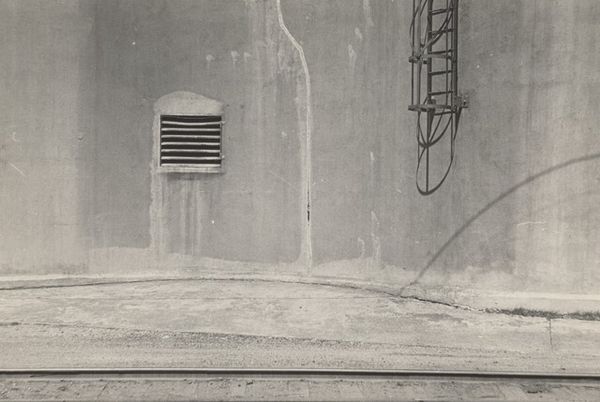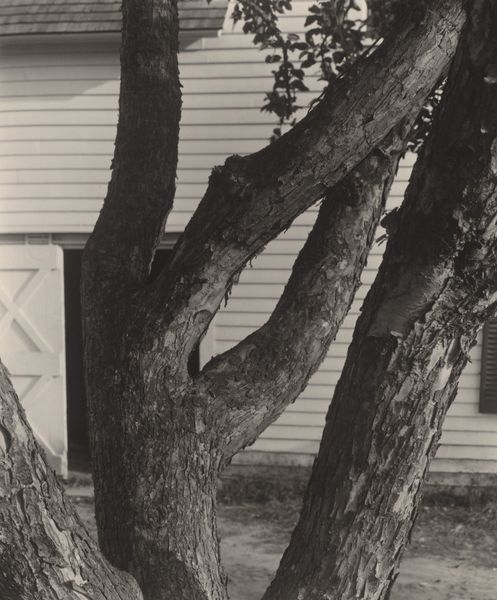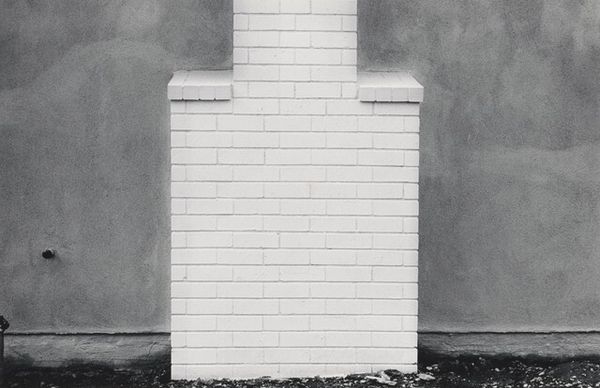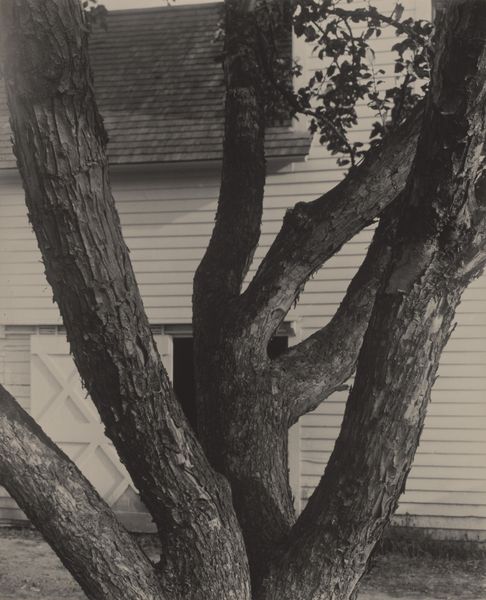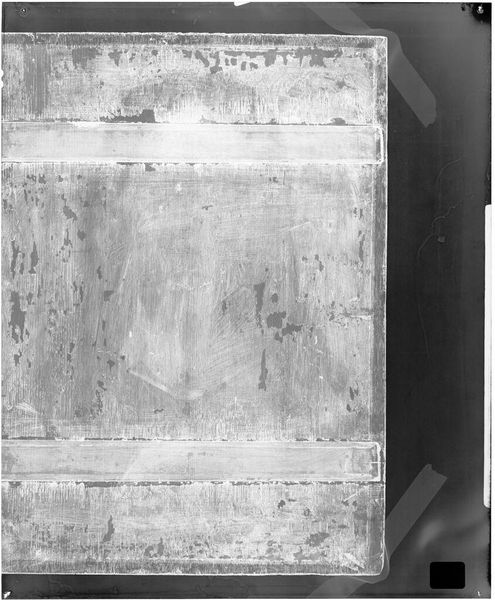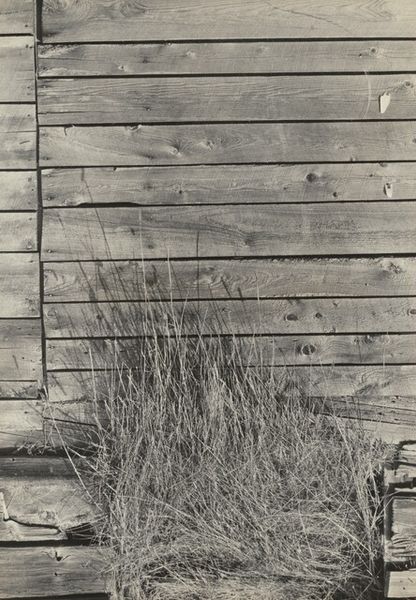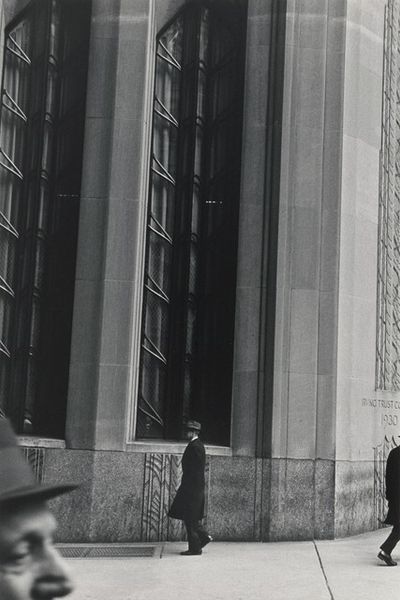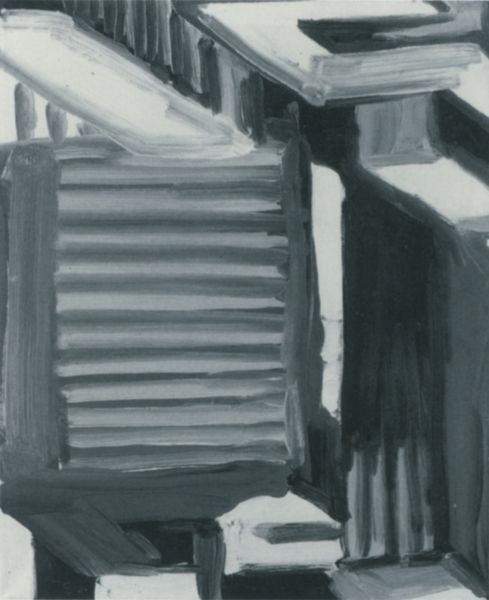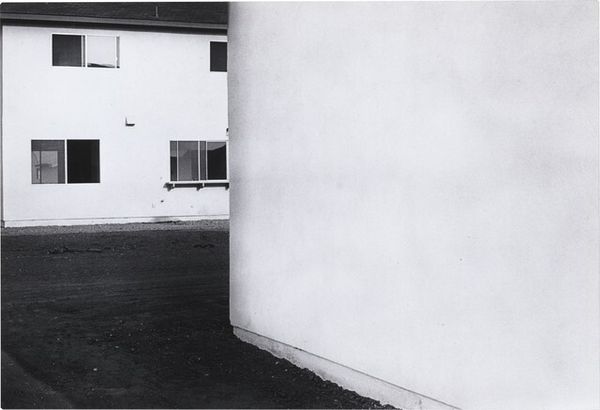
photography, sculpture, site-specific
#
sculpture
#
form
#
photography
#
geometric
#
sculpture
#
site-specific
#
line
#
modernism
Dimensions: image/sheet: 9.5 × 6.5 cm (3 3/4 × 2 9/16 in.) mount: 28.8 × 23.6 cm (11 5/16 × 9 5/16 in.)
Copyright: National Gallery of Art: CC0 1.0
Curator: This intriguing photograph, simply titled "Column," dates back to the 1930s and was captured by Dorothy Norman. Editor: It has an austere quality, doesn't it? Stark, almost monumental in its simplicity, despite being a close-up. Curator: Absolutely. It isolates a single architectural element, drawing our attention to the textures and form itself. The play of light on the concrete or stone, the visible striations...it speaks to the very material and how it was worked. Editor: And there's something inherently political about that. Thinking about the 1930s, the context of the Depression, labor, public works... this image feels imbued with a sense of industrial construction. Who built this? Under what conditions? How does it serve or fail to serve the broader public? Curator: Exactly! This invites us to consider how the built environment shapes social interactions and power dynamics. A single column implies a larger structure, a system... it reminds us to critically examine the architectural choices made and their material consequences on society and individuals. Editor: But also, I find the starkness almost dehumanizing. The lack of ornamentation, the emphasis on cold, hard material. How does such a structure speak to the human need for beauty or expression? It seems to reinforce a sense of alienation, of being just another brick in the wall, so to speak. Curator: That's an astute observation. Perhaps Norman intended to critique that very dehumanization through her focus on the material and unadorned structure, inviting reflection on these socio-political concerns by stripping down aesthetics. Editor: So, in focusing on form and function so starkly, Norman creates a dialogue, inadvertently perhaps, between monumentality and marginalization? That is powerful! Curator: Precisely. What initially seems a simple study of architectural form, it quickly morphs into a wider consideration about power, labor, and the nature of modern society. Editor: It truly reminds us that even the most austere artwork is inherently woven into larger narratives of class, identity, and cultural production. Curator: A stark photograph; a powerful statement!
Comments
No comments
Be the first to comment and join the conversation on the ultimate creative platform.
